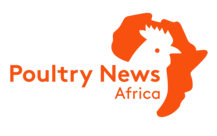In the poultry industry, one of the most overlooked yet destructive enemies is the Mycoplasma — a microscopic bacterium that quietly invades flocks and causes extensive economic damage. Despite being invisible to the naked eye, its impact on poultry health, growth, and egg production is enormous. Mycoplasmas are not ordinary bacteria. They are among the smallest living organisms known, and their unique structure — specifically the absence of a cell wall — makes them resistant to many commonly used antibiotics and capable of constantly changing their shape to evade detection by the immune system.
These bacteria primarily attack the respiratory and reproductive systems of chickens, turkeys, and other birds, leading to chronic infections that weaken entire flocks. Once introduced into a poultry unit, Mycoplasmas spread easily through respiratory droplets, contaminated feed or water, and even from mother hens to chicks through infected eggs. Farmers often underestimate their presence until visible symptoms or performance drops appear, by which time the infection has usually spread widely.
The consequences of Mycoplasma infections are far-reaching and costly. Infected birds often experience growth retardation, where young chicks fail to gain weight at the normal rate. Layers suffer from a sharp drop in egg production, sometimes up to 20% or more, reducing farm profitability. The quality of eggs may also decline, with thinner shells and reduced hatchability rates. In breeder farms, the infection can be passed from parents to offspring, leading to embryonic mortality and further compounding losses. In severe cases, Mycoplasmas can cause aerosacculitis (inflammation of the air sacs) and synovitis (joint inflammation), conditions that lead to labored breathing, lameness, and death.
Beyond the biological impact, Mycoplasma outbreaks have significant economic repercussions. Farmers face increased veterinary costs, higher feed conversion ratios, and reduced market value of their poultry products. The presence of Mycoplasma-positive flocks can even damage a producer’s reputation, especially in export markets where certification of disease-free status is mandatory. The bacteria’s ability to survive for days in litter, dust, feathers, or clothing makes it even more difficult to eliminate from farm environments once it becomes established.
To combat this invisible threat, strict biosecurity measures are critical. Poultry houses must be cleaned and disinfected regularly using approved sanitizers that target bacterial contaminants. Farm personnel should follow hygiene protocols — including changing clothes, disinfecting footwear, and avoiding contact with multiple flocks in a day. Visitors should be restricted, and vehicles entering the farm should be disinfected to minimize contamination risks. Equipment, cages, and feed systems also need frequent sanitation.
Farmers should ensure they source day-old chicks and hatching eggs only from certified Mycoplasma-free breeding operations. Regular health checks, laboratory testing, and surveillance programs can help detect infections early before they spread uncontrollably. In regions where vaccination is permitted, immunization against Mycoplasma gallisepticum and Mycoplasma synoviae — the two most common and harmful species — can help reduce disease severity and transmission.
However, vaccination should not replace biosecurity. It must be part of a comprehensive management plan that includes proper nutrition, environmental control, and stress reduction. Stress factors such as overcrowding, poor ventilation, or abrupt temperature changes weaken the birds’ immune systems, making them more susceptible to infections. Farmers must therefore maintain optimal housing conditions and ensure that feed and water quality remain consistently high.
In conclusion, Mycoplasmas are small but formidable adversaries in modern poultry production. Their ability to hide, adapt, and persist makes them a long-term challenge for farmers globally. The best defense lies in prevention — maintaining clean facilities, sourcing disease-free stock, and implementing regular monitoring programs. By prioritizing good biosecurity and flock health management, poultry producers can safeguard their investment and ensure sustainable productivity against this silent yet powerful enemy.



